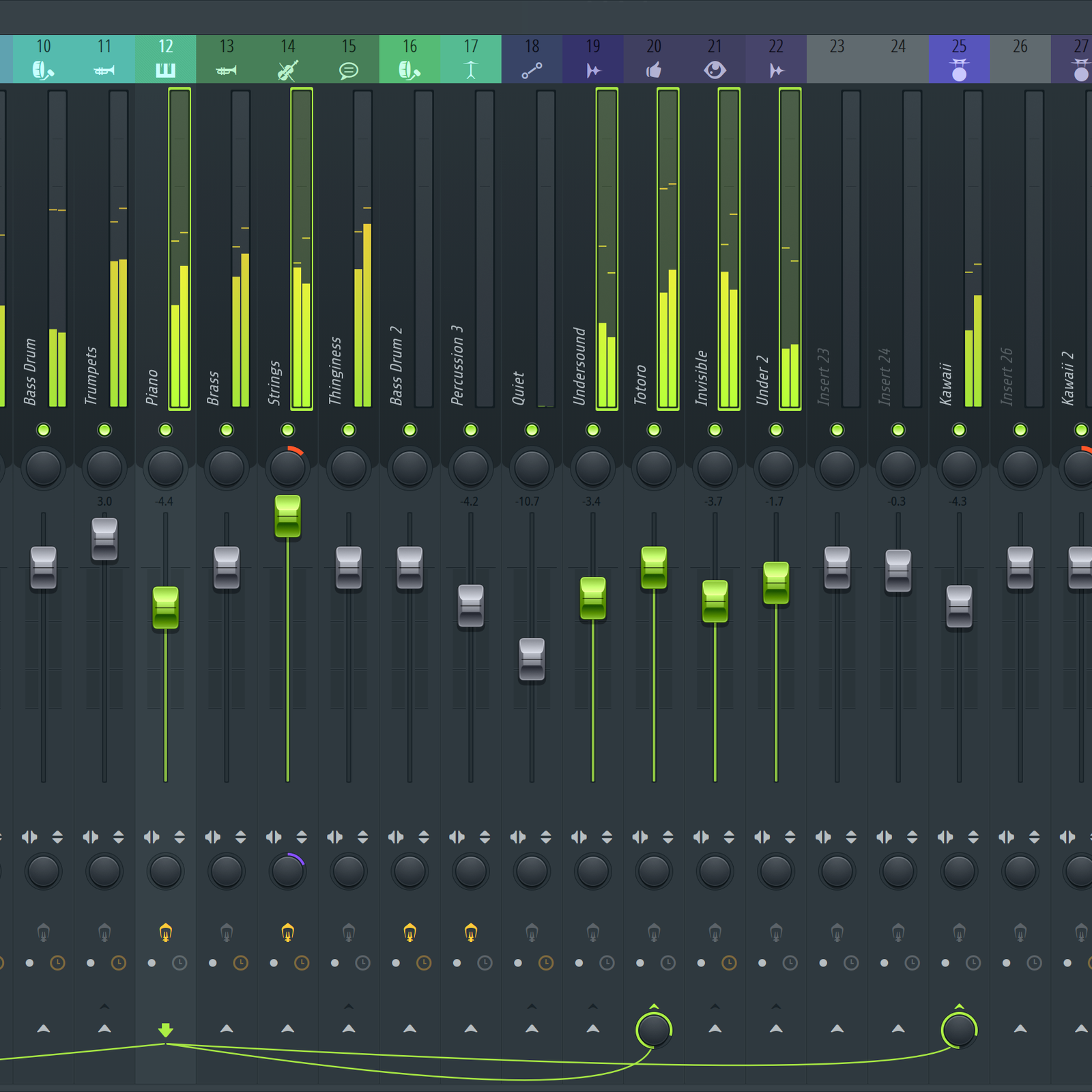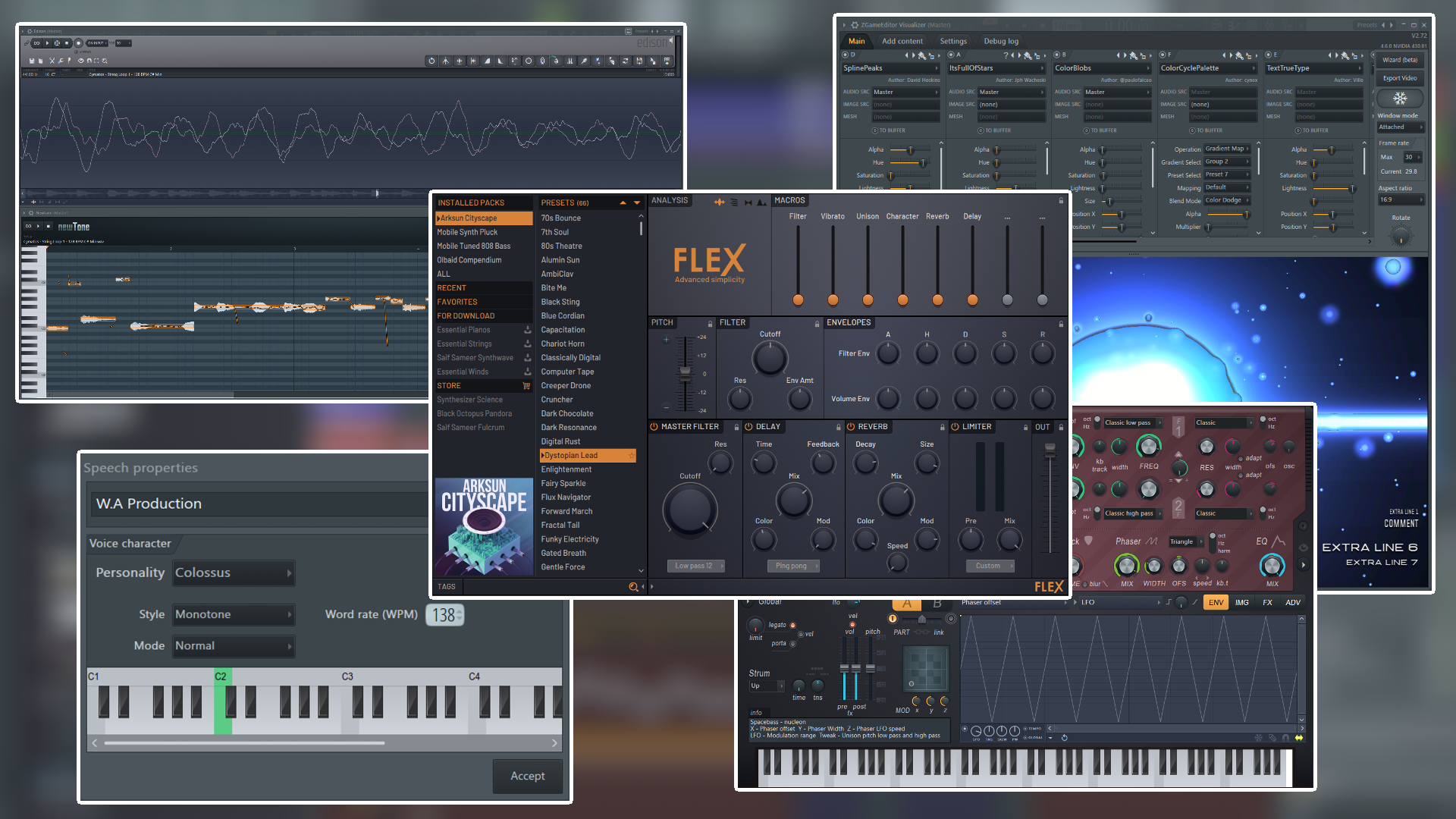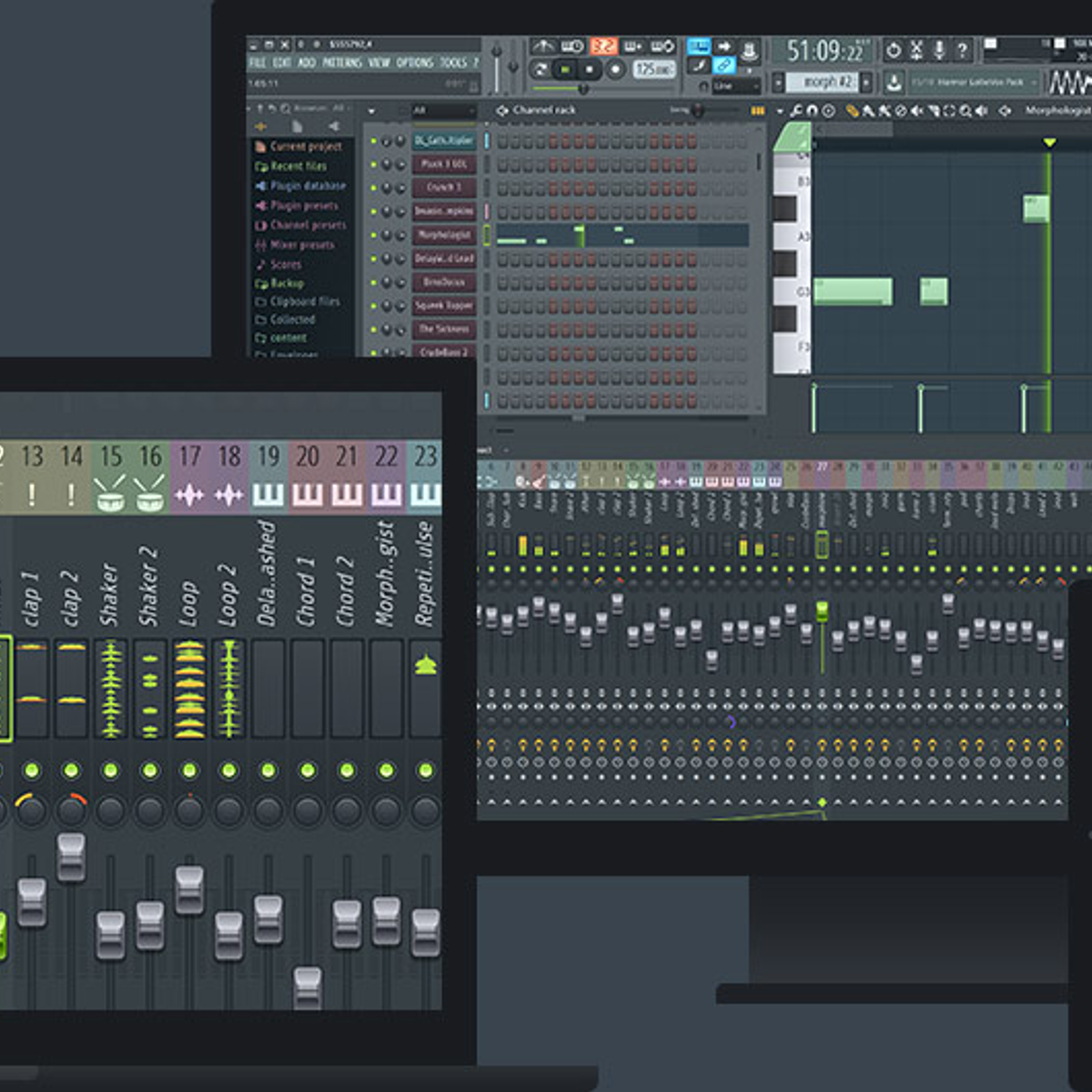FL Studio, once known as Fruity Loops, is a DAW that has progressed throughout the past 16 years. FL Studio is now one of the main DAWs in the game and has everything you need to get started.

There is a ton of DAWs out there and their uses vary from user to user. This wide variety of choices often leaves starters confused as to which software should they use.
We do a further comparison to see which one really stands out in the market. We compared their price, size, compatibility, processor needed and minimum RAM required and tabled the results down below:
DAW Logic Pro X Ableton Live 10 Cubase FL Studio 20 Reaper Price $199 $99 for Live intro$449 for Live Standard$749 for Live Suite €99,99 Cubase Elements 10.5€331,99 Cubase Artist 10.5€581,99 Cubase Pro 10.5 $99 for Fruity edition and$199 for Producer Edition $60 Discounted Licence$225 Commercial Licence Compatibility MacOS 10.8.4 and later only Windows 7/8/10 (64 bit only)MacOS 10.7 and later Windows 7/8/10 (32 and 64 bit)MacOS (32 and 64 bit) Windows 7/8/10 (32 and 64 bit)MacOS 10.13 only Windows 7/8/10 (32 and 64 bit)MacOS (32 and 64 bit) Processor Intel® Core™2 Duo processor. Intel® Core™ i5 processor or faster recommended Windows:64-bit Intel® (Intel® Core™ i5 processor or faster recommended) or AMD multi-core processorMacOS:Intel® Core™2 Duo processor. Intel® Core™ i5 processor or faster recommended Intel Core i series or AMD Ryzen multi-core for both windows and macOSIntel I5 or faster is recommended 2 Ghz Intel Pentium 4 / AMD Athlon 64 (or later) compatible CPU with full SSE2 support 2 Ghz Intel Pentium 4 / AMD Athlon 64 (or later) compatible CPU with full SSE2 support Minimum RAM 4GB 4GB 4GB 4GB 2GB- What PC, RAM & CPU Do I Need For Music Production In 2021?
- FL Studio vs. Ableton vs. Logic vs. Cubase vs. Pro Tools Which is Best ?
Top 5 Most CPU Efficient DAWs
1. Reaper
Source: Reaper.fm
Reaper is specifically designed to be a cheaper and more lightweight DAW that is able to support most plugins without any issues. As an FL Studio user, I have been personally testing this DAW over the course of a week using heavyweight VST like Omnisphere, Serum, Waves, and Izotope and I’ve got to say that I was impressed.
It has managed to live up to its reputation with seamless startup and loading times. Reaper also has an incredibly efficient GUI with very minimum bloat and unnecessary tabs that makes it not only CPU friendly but user friendly as well.
Reaper comes with a few CPU saving features like:
- Performance Meter: Reaper’s performance meter offers the most cohesive performance analysis. This enables the user to see exactly which tracks are using how much power.
- Reaper’s Render: this is a very smart way of quickly rendering selected tracks to stem tracks and muting original. Muting original track frees up a huge amount of CPU memory
However, testing Reaper in bigger projects with a huge ton of plugins, you start to see its flaws. Crashing and stuttering became more often and loading times slowed down significantly. Overall, I would personally recommend this DAW for any startup user and any user that is working on smaller projects.
2. FL Studio 20
My personal favorite DAW that I have been using for years now. FL Studio comes with a huge number of built-in plugins and effects which makes the need for 3rd party plugins unnecessary. 3rd party plugins used are automatically optimized by FL Studio itself for better performance.
Overall, FL studio is a fantastic option for a seamless, optimal CPU consumption DAW. A stand-out feature that makes FL Studio especially powerful is the “Smart Disable” feature. This ensures that if a plugin is not being used, then it is automatically switched off to save memory and allows the processor to run lighter.
In addition to that, FL Studio has a built-in latency monitor that detects which plugin is going to need how much CPU.
FL Studio also runs on relatively low specs like 4GB RAM and Intel Pentium processor which makes it available for a wide range of devices. FL Studio’s disadvantages include no support for MacOS 32-bit and its GUI mainly uses more CPU when compared to other DAWs mentioned.
Stand-out features that make FL Studio especially powerful include:
- Smart Disable: This ensures that if a plugin is not being used, then it is automatically switched off to save memory and allows the processor to run lighter.
- Quality Sampler: This will help you to bounce your audio fast and make your project light on the CPU
3. Steinberg Cubase
The support for VST3 (unlike many other DAWs) means that Cubase is able to automatically suspends unused plugins which save a lot of CPU.
Unfortunately, this software does not lack many flaws. Cubase uses a pretty bad GUI which tends to overuse CPU from time to time and has a ton of bugs that causes the program to crash sometimes.
Cubase gives the user a few techniques that can be used to optimize CPU resource allocation. These include:
- Freezing instruments: allow the user to export MIDI tracks into an audio file that is saved and be used for playback instead of the instrument itself.
- Export Audio mixdown: self-explanatory. Allows the user to mixdown and export all audio files.
- Render in Place: MIDI tracks are rendered and placed in the exact same location in the grid for the user to use it instead of the MIDI tracks which use more power.
- Direct Offline Processing: this is used to save power by rendering a new audio file in the background and allowing playback from the saved file.
Daws Similar To Fl Studio
4. Ableton Live 10
Ableton is one of the most stable and CPU friendly DAWs out there. This is because of its highly effective built-in plugins which really encourages its user to stick with them and not look for 3rd party plugins.
That being said though, Ableton still performs incredibly well on 3rd party plugins. We personally tested it on Waves, Fabfilter, and Izotope plugins and have seen significantly better performance when compared to Logic Pro X. Anyway, if you are looking for Free VST Compressor Plugins, check this post. The main disadvantage of Ableton Live 10 is that it only works on 64-bit systems and requires at least a dual-core processor.
Features that reduce CPU usage include:
- Disable unused inputs and outputs: Ableton users can disable the mono input pair of the same stereo input, or vice versa to reduce excessive CPU usage
- Disabling warping in Simpler
- Freeze tracks: this feature creates an audio file of the original track to be used instead thus saving more power since fewer effects are going to be used
- How to Use Ableton 10 Live (Beginner’s Illustrated Guide)
5. Logic Pro X

Available exclusively to Mac OS users, Logic Pro X is a go-to software for Apple users. This is because it is specifically optimized to work efficiently in all apple computers and since it is designed exclusively for that, you will be guaranteed a smooth performance.
Best Free Daw Like Fl Studio Key

Logic Pro X requires only 4 GB of RAM and will work on integrated graphics as well. Comparing it to its predecessor Logic Pro 9 based on personal usage and based on the Evan Multicore Benchmark test which uses a combination of bundled Logic plug-ins and samples, Logic Pro X performs significantly better.
However, its main disadvantage comes from its advantage itself and that is, it runs only on Mac devices. This means that the start-up cost is pretty high (since Macbooks are known to be expensive) and the lowest benchmark for testing is high as well (since most Macbooks come with decent CPUs).
Certain features that allow a user to save more CPU power include:
- Turn off animations: Logic Pro X is amongst few DAWs that has an option to turn off GUI animation to reduce CPU usage.
- Switch off sample-accurate automation: using this feature reduces CPU usages in projects that do not use automation.
Conclusion
In conclusion, the choice of DAW is totally subjective and based on personal preference. For example, some people may choose to choose FL Studio for its user-friendly GUI. Others may find Ableton to be their choice for its powerful built-in plugins. However, this does not undermine the importance of other DAWs and that is the beauty behind it all.
Every DAW has its pros and cons and every con has a workaround if you get familiar with the software. I personally find myself using up to 3 DAWs, each to do a specific task for example; I use FL Studio to make beats, Ableton to record vocals and Cubase to mix and master, it’s only a matter of preference. In terms of CPU usage, I have experienced the best performance from Reaper but that does not necessarily mean that Reaper is the best DAW. It all depends on the user. If you need more detailed information about what would be the best DAW for you, check this list.